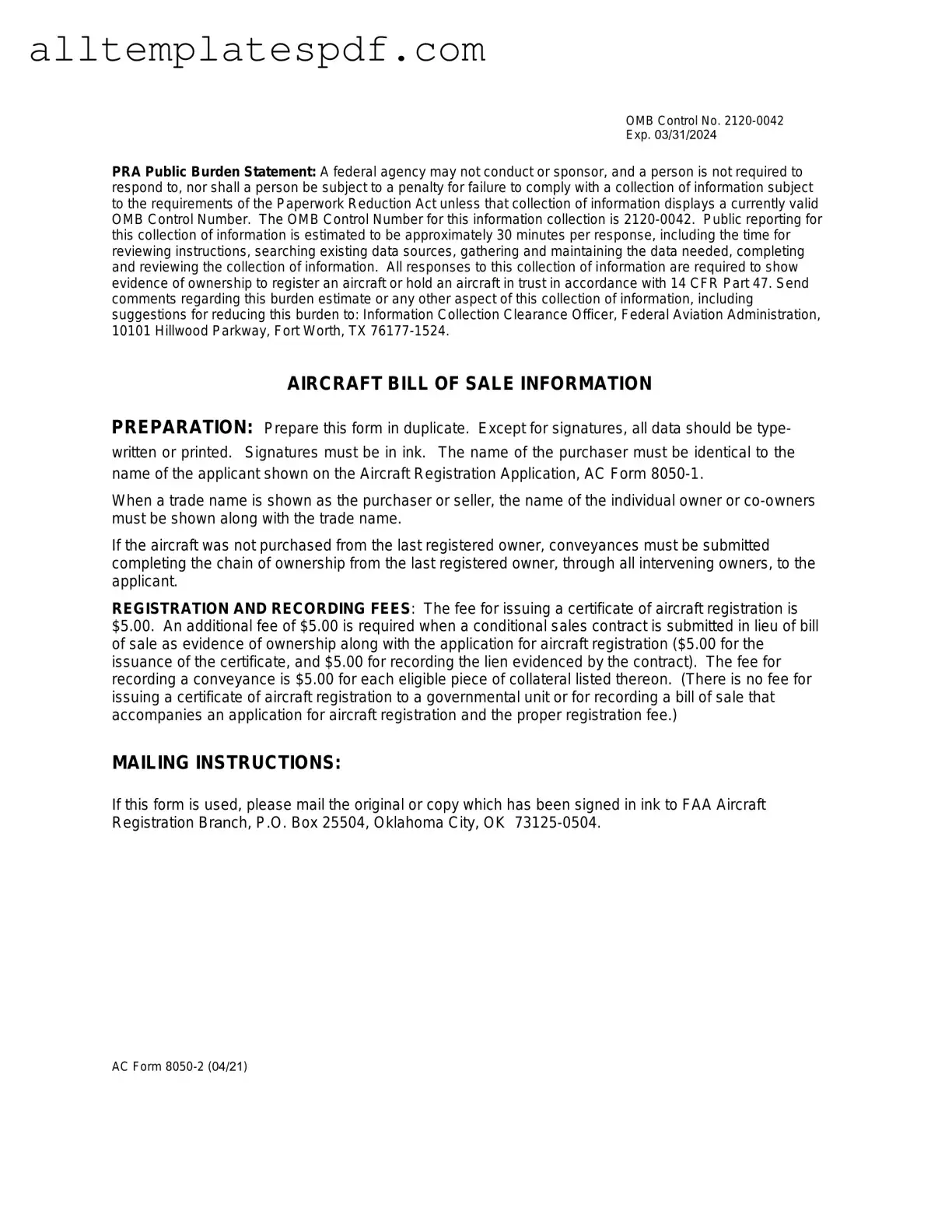Completing the Aircraft Bill of Sale AC 8050-2 form can be straightforward, yet many individuals make common mistakes that can lead to complications. One frequent error is failing to provide accurate information about the aircraft. This includes the make, model, and serial number. Inaccurate details can cause delays in the registration process or even result in legal disputes.
Another common mistake is neglecting to include the correct names and addresses of both the seller and buyer. This information must be precise and match official records. Omitting or misspelling names can create confusion and hinder the transfer of ownership.
Many individuals also overlook the importance of signatures. Both the seller and buyer must sign the form for it to be valid. Failing to obtain the necessary signatures can invalidate the bill of sale, making it unenforceable.
In addition, some people forget to include the date of the transaction. This date is crucial for establishing the timeline of ownership transfer and may be needed for future reference. Without it, questions may arise regarding when the sale actually took place.
Another mistake involves not providing the purchase price. This information is essential for record-keeping and tax purposes. Leaving this section blank can lead to complications with the IRS or other authorities.
People often misinterpret the requirements for notarization. While notarization is not always necessary, certain transactions may require it. Failing to understand when notarization is needed can lead to issues with the legitimacy of the document.
Lastly, individuals may not keep copies of the completed form. Retaining a copy is vital for both the buyer and seller. It serves as proof of the transaction and can be essential if any disputes arise in the future.
